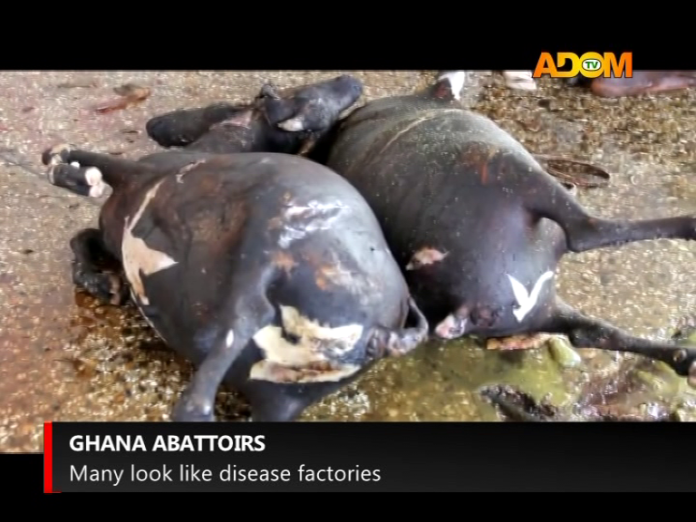Ghana’s fast-growing population is certainly increasing the demands and consumption of meat, just as the case is in many other countries.
In Ghana, beef, chevon (goat meat) and poultry are hugely consumed. Indeed, for decades now, the demand for meat has far outweighed production and supply; forcing dealers to import from such neighboring countries as Burkina Faso, Togo and The Ivory Coast – or European countries. Much of the meat, nonetheless, remains produced and prepared inland.
ALSO: Akufo-Addo terminates appointments of NYA CEO, two deputies
So, as an ordinary person who buys from a butcher’s shop or the meat market, have you wondered where these products come from? And, under what condition was the slaughtering of the animal the meat of which you last ate done?
Adom TV’s focus in this News Feature is to expose some of the bad practices in the country’s abattoirs and meat shops.
Starting from the Upper East, let’s look at the Bawku slaughterhouse: the insanitary nature of the facility is so nauseating it can easily make you lose appetite for meat consumption. Here, the washing and cutting of the carcass are done on this untidy floor. Workers here say they have no choice but to operate under this condition to eke out a living.
ALSO: 14-year-old faces five murder charges after confessing to killing his family
In its current appalling state, don’t you think this slaughterhouse must be closed down without further delay? But, hold on a bit: If the state of the Bawku abattoir sickens you, wait till we show you the state of its counterpart at Asamankese, in the Eastern Region. Hard to say whether Bawku or Asamankese is better; but, surely both are terrible. At Asamankese, meat is prepared under such an unhygienic condition that workers here can only conclude the West Akyem Municipal Assembly does not care two hoots.
So, what about the capital region itself – Greater Accra? We take you to Tulaku – a very popular slaughtering centre that dealers from Ashaiman, Tema, Akosombo and several other towns in Accra and the Volta Region buy meat from daily.
At Tulaku, just like many other slaughterhouses across the country, the same bare floor that has been contaminated with rotten animal blood is the platform on which washing of the animals is done. This, many health experts determine, is a threat to public health. Dr. Osei Agyeman-Bonsu is a Public Health Physician.
The use of disused lorry tyres for singeing the meat is another health threat that experts are warning Ghana against. But, it remains an entrenched culture in most of the facilities we visited. If you are a fan of ‘wele’, the hide of cattle, this is how it is prepared.
Our camera lenses captured this truck transporting ‘wele’ to some selling centres in Accra. Is this not just too threatening?
So, what are the two main regulatory bodies, the Veterinary Service and Public Health Department, doing to ensure safety in the country’s meat industry?
This has been a feature by Kwame Anum dubbed Diseased Slaughterhouses.

